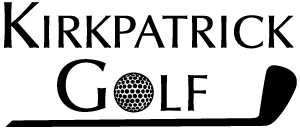My thirty-five years of experience teaching golfers has taught me there are generally two reasons people take golf lessons. One is they are new to the game and don’t want to develop bad habits. The other is an established player who is having a shot problem he or she hasn’t been able to resolve on their own. In either case I think it is a good idea to seek out a professional instructor.
How do you go about finding someone in your area? One of the best methods is word of mouth or a referral from a friend or fellow golfer. Generally good instructors don’t have to advertise because their students do if for them. If you’re new to an area you may want to call a few golf courses and ask for a referral. Searching online is another method that often will provide a teacher’s bio and reviews from students.
After choosing an instructor I would contact them and ask for some information such as the cost, do they teach all skill levels, how many years have they been teaching, do they teach a particular method, etc. A person’s first golf lesson can sometimes be intimidating which a good instructor will recognize and strive to make the student feel at ease and comfortable.
If you’re a beginner your first few lessons will cover fundamentals such as grip, posture, ball position, alignment, the basic swing and a discussion of the various clubs in a set and the purpose of each. As I mentioned an established player usually seeks out help when he or she is having a particular shot problem. It could be a slice, topping the ball, hitting the ground behind the ball, shanking or others. In these cases, the instructor will start by asking some questions about your game, how long you’ve been playing, did you play other sports, do you have any physical limitations and injuries, have you taken lessons before and if you did were they beneficial. The lesson will generally have three segments. The first is diagnosis where the instructor will watch you hit some shots. The second is explanation where the instructor will explain what is occurring at impact between the club and ball that is causing the shot problem. The third is correction where the instructor will demonstrate what should be happening at impact between the club and ball, and what the necessary change is and how to perform it. Often your instructor may suggest a swing drill to help you feel the new swing movement.
Keep in mind that to improve the real work is done after the lesson. Any change in either pre-swing fundamentals or the swing itself does not come easy. Players need to realize it takes dedication and a time commitment for a swing change to become habit.
One other word of caution – the internet offers literally thousands of articles and videos on how to improve your game. The problem is most all these tips are not relevant to your problem, and in most cases will only cause more confusion and frustration. In my opinion seeking the help of an experienced teaching professional and creating a reasonable practice regiment is the best way to improve your game.
